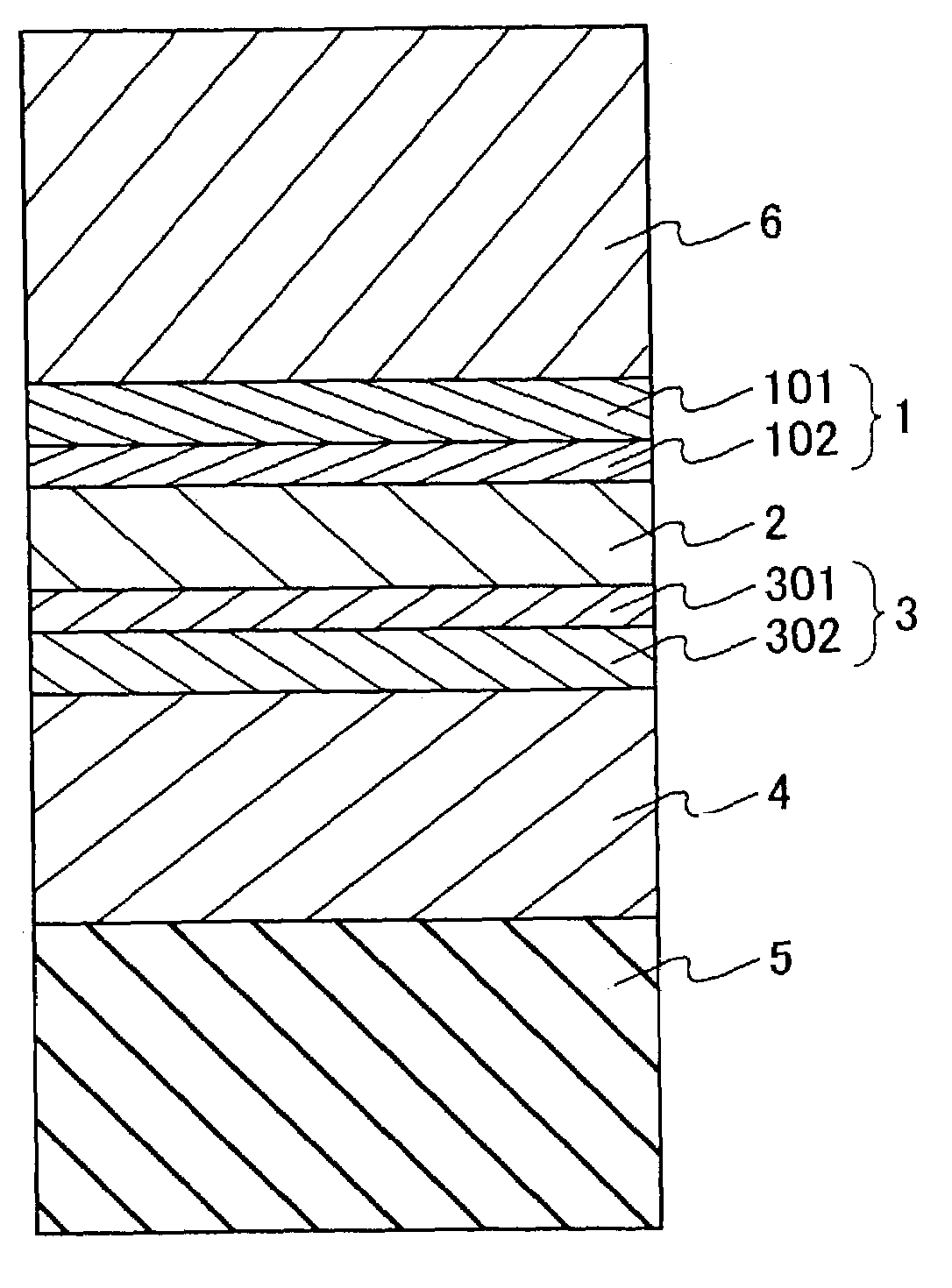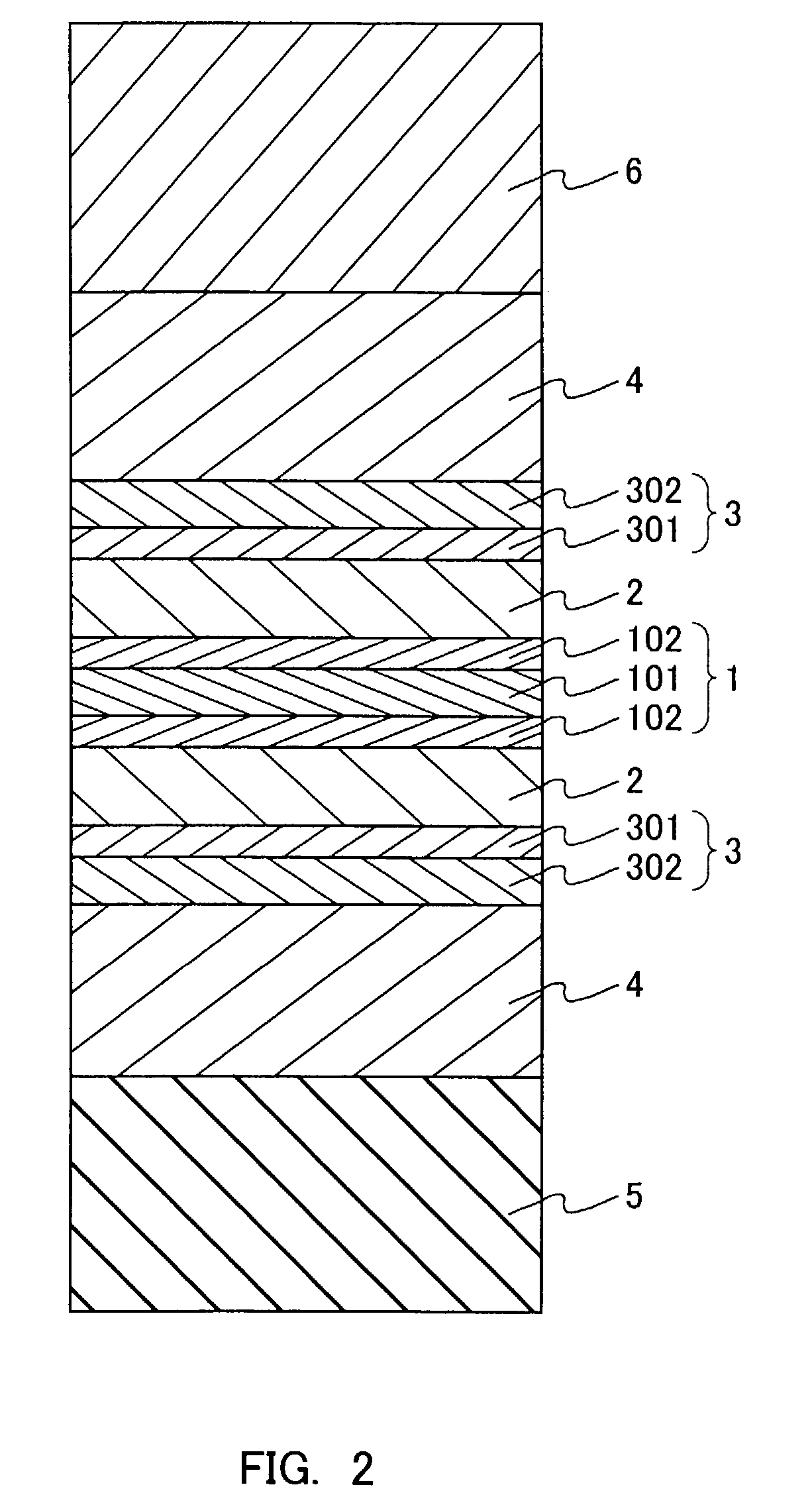Magnetoresistance effect device and magnetoresistance effect head comprising the same, and magnetic recording/reproducing apparatus
- Summary
- Abstract
- Description
- Claims
- Application Information
AI Technical Summary
Benefits of technology
Problems solved by technology
Method used
Image
Examples
example
(Example 1)
[0051]A magnetoresistive element having a configuration shown in FIG. 8 was fabricated by using a multi-sputtering device. As a material for a substrate 7, Si was used. A Cu film, a Pt—Mn film and a Co—Fe film were formed as a lower electrode 5 (used also as a base layer), a magnetization rotation suppressing layer 4, and a pinned magnetic layer 302, respectively. Further, Fe films were formed as interface magnetic layers 301 and 102. Furthermore, a Cr film, a Ni—Fe film and a Cu film were formed as a nonmagnetic layer 2, a soft magnetic layer 101 and an upper electrode 6, respectively. By using a vacuum chamber exhausted to a pressure of not more than 1×10−8 Torr, sputtering was performed while feeding an Ar gas so that a pressure of about 0.8 m Torr was attained.
[0052]The film configuration of the element thus fabricated is shown below along with the thicknesses of the respective films (hereinafter, film thicknesses are expressed in nm).[0053]Element A: Substrate / Cu (50...
example 2
(Example 2)
[0064]In the same manner as in Example 1, an MR element having a structure shown in FIG. 9 was fabricated. However, in this case, although shown to be a single layer, a pinned layer 3 was formed of a synthetic ferrimagnetic pinned layer of CoFe / Ru / CoFe. A glass substrate was used as a substrate 7, and Cu films were used as a lower electrode 5 and an upper electrode 6. Further, a Ni—Mn alloy film, a Ru film, a Co0.9Fe0.1 alloy film were used as a magnetization rotation suppressing layer 4, a nonmagnetic layer 2, and a free layer 1, respectively. No interface magnetic layer was formed in this case. The film configuration of this element is shown below.[0065]Element C: Substrate / Cu (500) / Ta (3) / Ni0.5Mn0.5 (30) / Co0.9Fe0.1 (2) / Ru (0.7) / Co0.9Fe0.1 (3) / Ru (2.5) / Co0.9Fe0.1 (2) / Ru (2.5) / Co0.9Fe0.1 (3) / Ru (0.7) / Co0.9Fe0.1 (2) / Ni0.5Mn0.5 (30) / Cu
[0066]In this configuration, a Ta film functions as a base film for improving a property of the magnetization rotation suppressing layer. In...
PUM
 Login to View More
Login to View More Abstract
Description
Claims
Application Information
 Login to View More
Login to View More - R&D
- Intellectual Property
- Life Sciences
- Materials
- Tech Scout
- Unparalleled Data Quality
- Higher Quality Content
- 60% Fewer Hallucinations
Browse by: Latest US Patents, China's latest patents, Technical Efficacy Thesaurus, Application Domain, Technology Topic, Popular Technical Reports.
© 2025 PatSnap. All rights reserved.Legal|Privacy policy|Modern Slavery Act Transparency Statement|Sitemap|About US| Contact US: help@patsnap.com



